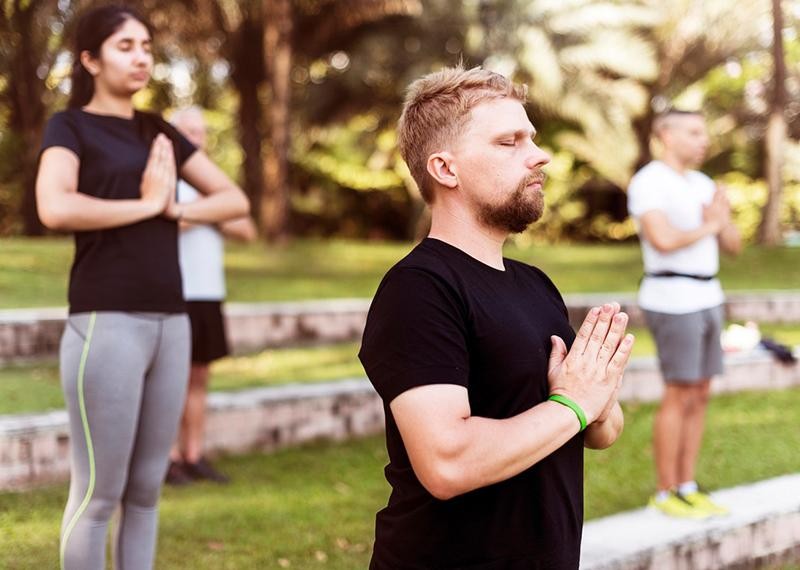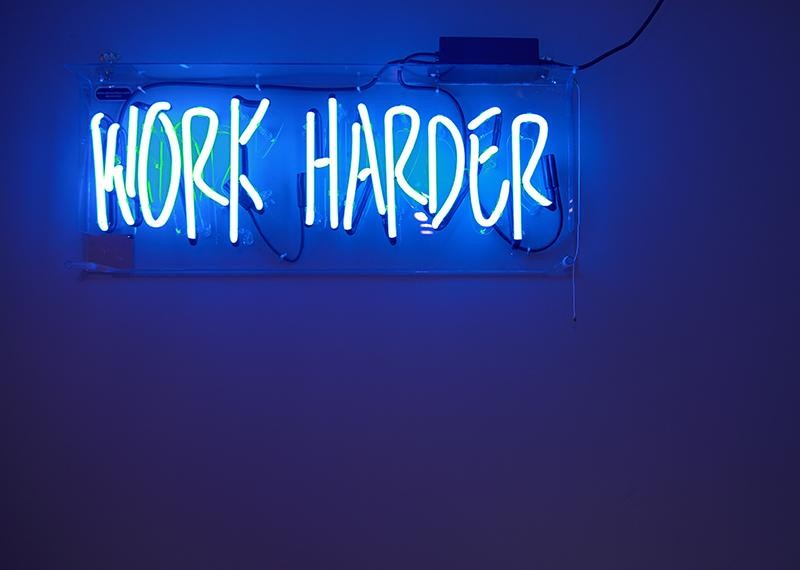
02 May How to Be More Creative and Intuitive In Business
Without a creative spark, your business flounders. You can’t come up with the “next big thing” that will keep your customers interested. In the end, your competitors overtake you. Here are four science-backed tips for developing creativity.
How much do you value creativity within your business?
It’s an important question. Creativity is the source of almost every success that your business may experience. Somebody has to come up with an idea, be it for a new product or an innovative sales strategy. If you don’t have those ideas people, you’ll struggle to solve problems.
That’s something that many clients come to me to deal with. They need to find that spark that pushes them onto the next level.
Before digging into my tips for developing creativity, I want to highlight some research that provides some context to my advice.
The Research
The first piece comes from the Center for Talent Innovation (CTI). Based in New York, the CTI aims to bridge cultural and diversity gaps to unlock the talent in people. The organisation believes that bridging these divides helps businesses develop creativity.
It also offers research to back this up. In 2014, the CTI pooled together 40 case studies, along with 1,800 employee surveys. This combination of research pieces looked at the topics of inherent diversity and acquired diversity.
Inherent diversity links to the traits that you’re born with. Your ethnicity and gender are good examples of inherent diversity. The idea is that your diversity comes as a result of the specific experiences you’ve had as part of a group.
Acquired diversity involves the traits that you gain from your experiences. For example, working in a different country allows you to acquire diversity. You pick up information about other cultures, which you can then apply to your work.
The CTI’s research revealed some startling statistics. Firstly, it found that a publicly-traded company that has inherent diversity is more likely to expand market share than one that doesn’t. In fact, such companies were 45% more likely to have expanded their market share in one year.
That’s not all. Such companies are also 70% more likely to have expanded into new markets during the same period.
The research didn’t stop there. The CTI also wants to understand how a company’s internal diversity affects its innovation. It found that having people who represent your target market has a marked effect. Companies that fit this criteria were over 150% more likely to understand their audience. As a result, they could create and innovate in-line with what their target market wants.
My second example comes from a Deloitte report made in 2012. The report examined three major Australian businesses and looked at 1,550 employees in total. It also found that diversity levels played a large role in the success of such companies. In fact, the report measured an 80% business performance improvement in companies that have high diversity levels.
So, what are we to conclude from all of this?
Diversity matters. Inherent diversity provides your business with different perspectives. As a basic example, a woman will understand the needs of women better than a man. That’s a broad generalisation, but you understand the basic point.
Acquired diversity allows you to learn from experience. For example, somebody who has worked in India understands the culture. As a result, they can facilitate measures that target the Indian market better than somebody who hasn’t worked in the country.
Of course, diversity isn’t the only thing that you need to bolster your organisation’s creative output. There are several things that can help you in developing creativity and intuition.
Before looking at some of those things, let’s change gears again. Here’s a case study of how one of the world’s most prominent entrepreneurs leverages his own creativity.
Richard Branson – Creative Marketing Case Study
Everybody reading this will know of the Virgin Group and its founder, Richard Branson. You’ll also know that he’s one of the most successful people in the world. His successes in business have allowed him to generate a personal net worth of US$5 billion (AU$6.5 billion).
Diversity within his organisations plays a huge role in this. But Branson employs his creativity in other areas. In fact, he’s perhaps one of the most creative marketers in the world. Here’s just a short list of some of the stunts he’s pulled over the years:
- Multiple attempts to circumnavigate the globe in a hot air balloon. If he had achieved success, Branson would have been the first person to achieve the feat. As it happened, he didn’t. But he still generated a ton of publicity for these efforts.
- Upon opening Virgin Brides, Branson donned a wedding dress. Again, Branson applied his own adventurous mind to the benefit of one of his businesses.
- How do you celebrate your new airline’s first flight? In Branson’s case, you bungee jump off the side of Las Vegas’ Palms Hotel and Casino. You also crash into the building a couple of times while ripping your trousers.
- Virgin Galactic’s launch needed its own publicity stunt. Branson provided it again by turning up to the press conference wearing a spacesuit.
- When Branson opened Spaceport America, he needed a new way to get attention. His solution was to abseil down the side of his own building while drinking a glass of champagne.
There’s no denying that Branson has an adventurous soul. And these publicity stunts likely indulged that nature, to a certain extent.
But they did so much more than that. The sheer creativity involved in each got people talking. It’s practically impossible to ignore the businesses that Branson creates when he’s willing to go to such lengths to promote them. Moreover, this is an example of using acquired diversity to the benefit of a business. Branson’s adventures had helped him with the skills needed to try such stunts. He put that to good use to build a buzz around his work.
Some may argue that such stunts promote the brand of Branson, rather than his companies. But Branson has an indelible link to the Virgin Group. You could argue that anything that promotes Branson also promotes the business.
4 Tips for Developing Creativity (According to Science)
These marketing examples all showcase the same thing. They’re creative ways to get the word out about a new venture.
Now, I’m not saying that you have to start jumping off the sides of buildings to expand your business. But you do want to emulate the passion and creativity that Branson demonstrates.
That leads to the key question – “How do I become more creative?” I’ve already covered diversity within your organisation. But here are a few more tips, with the research that proves that they work.

Tip #1 – Try Guided Meditation
Guided meditation is a technique that I regularly employ with my clients. It’s a simple process. You meditate in accordance to the guidance that somebody else provides. The guide may ask you to think of certain things or try to get you into a different state of mind than you’re currently in.
There’s a reason for this attempted alteration of mindset. We’ve become so conditioned to think in certain ways that we think it’s ridiculous to do things differently. That’s the enemy of creativity. If you can’t think differently to the status quo, you’re not going to come up with any new ideas to expand your business.
Here’s how I do it. Firstly, think about whatever challenge that you’re facing in your business life. Then, choose an animal and approach the problem from that creature’s perspective. What solution would the animal come up with?
It feels a little odd and silly, doesn’t it? But that’s the point. The route to creativity and greater intuition is “In No Sense”. You’re creating an environment where the established rules don’t apply. This means you can create new ideas with no restrictions.
The science backs up the power of meditation in aiding creativity. A research paper published in the Frontiers in Psychology journal offers more information. It examined various forms of meditation and found that using them allowed for divergent thinking. This is the state that I want you to achieve during guided meditation. Divergent thinking takes you away from the norm, which allows you to think creatively.
Tip #2 – Spend Time in Nature
When’s the last time that you escaped the confines of the office and explored?
Getting out into nature helps you to escape whatever stresses you’re struggling with in life. But it also has another purpose. It can get your creative juices flowing.
It all comes down to your perspective. When you’re in nature, you’re not deep within the culture that your organisation has created. This allows you to see things differently. Your mind clears and you can approach problems from a fresh perspective.
Researchers at the University of Kansas provide evidence of this. They took 120 people to different natural locations in Colorado, Alaska, and California. The study found that exploring natural locations leads to increased cognitive function. The best part is that it boosts creativity by up to 50%.
Tip #3 – Travel More
This tip ties into the acquired diversity point I made earlier. Travelling opens your mind to new experiences and cultures. You experience unknown sounds, sights, and sensations that leave a permanent impression. Most importantly, you can apply these new experiences to your work.
But a week spent lying on a beach somewhere isn’t enough to get the creative juices flowing. Interaction with local people and immersion into the culture are the keys. That’s how you can figure out how other people think.
A study published in the Academy of Management Journal demonstrates this in more detail. Researchers looked at the output of some of the world’s leading fashion houses over an 11-year period. They found that the travel experiences of each house’s creative directors had a direct impact on the creative output of the business.
Don’t just hire people who have travelled. Boost your own acquired diversity whenever you travel. Immerse yourself into local cultures and try to understand why different people think the ways that they do.

Tip #4 – Get Blue
We all draw associations between colours and different mindsets. Red associates with danger, whereas green associates with envy or illness.
That was the idea behind a University of British Columbia study. Researchers examined 600 people to see how colour affected the way that they think. They had each person perform tasks on a computer. Some performed tasks on a computer with a red screen, whereas the rest performed tasks on a blue screen.
The study produced remarkable results. It found that those working on the blue screens created two times more creative outputs than those using the red screens.
So, blue is the colour of creativity. It makes sense too. When we think of the colour blue, we think of the ocean or the sky. These are open-ended environments that we associate with tranquillity and peace. What better environment can there be for the facilitation of creative thinking?
Try adding a little blue to your life. You’ll find that your creative output increases due to the associations your mind creates with the colour.
The Final Word
Creativity isn’t something that you’re just born with. It’s a skill that you can nurture through your own actions. Experiencing new things and changing the ways that you think can help you to get into a creative mindset.
There are several ways to do this:
- Develop diversity within your organisation
- Engage in guided meditation
- Spend more time in nature
- Travel and immerse yourself in foreign cultures
- Leverage the colour blue to your benefit
During a 1-Hour Business Review Session, I can help you to unlock the creativity that your business needs to thrive.
During the session we can discuss any aspect of your business in which you would like support, such as:
- Growth Strategies
- Marketing
- Sales and Distribution
- Pricing and Packaging
- Consolidation
- Acquisition
- Merger/Sale, Capital Raising, IPO
After 35+ years working with small and large businesses, buying, selling and growing them across a range of sectors, I can work with you on any level or area.
And it all starts with a no-obligation 1-Hour Business Review Session.



